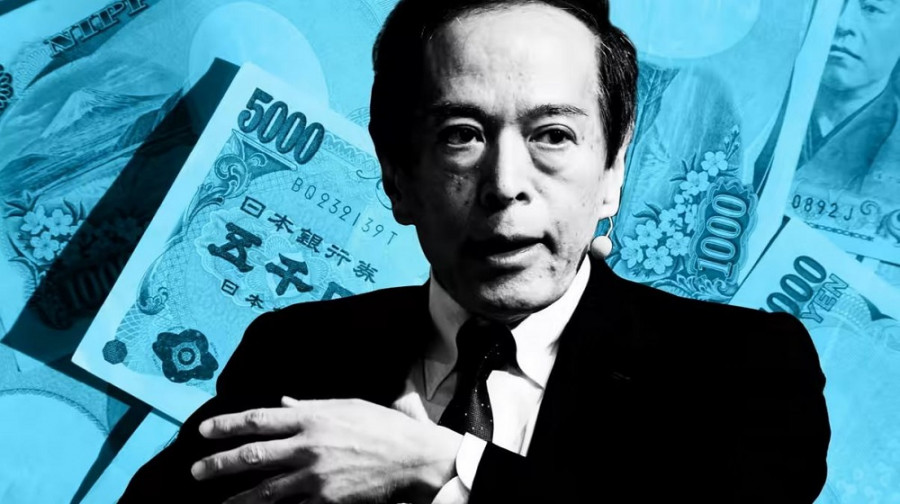The USD/JPY pair plummeted by almost 200 pips at the start of the new trading week. Starting at 147.80, the price dropped to 145.90 in just a few hours. Such dynamics was driven not only by the greenback's weakness amid increased interest in risky assets but also by the Japanese yen's strength following a hawkish statement by the head of the Bank of Japan.
It's worth noting that for many weeks (since mid-July), the pair was entrenched in an uptrend mainly due to the dollar's broad strength. The yen had been following the greenback, lacking its own arguments to turn the situation in its favor. However, it's important to be cautious with Monday's downward move. Firstly, there are currently no grounds for a sustained downward movement – the BIJ head only hinted at the possibility of abandoning negative interest rates. Secondly, this week, we expect the release of US inflation data. According to preliminary forecasts, the Consumer Price Index, the Producer Price Index, and the Import Price Index will show upward dynamics, reflecting the corresponding trends. In such a case, the dollar bulls could remind us of their presence, including in the USD/JPY pair. Therefore, short positions on the USD/JPY pair appear risky for now – at least until the bears settle below the 146.00 target (the middle line of the Bollinger Bands indicator, coinciding with the Tenkan-sen line on the daily chart)."

There are certain prerequisites for the development of the bearish scenario, but not in the coming weeks. BOJ Governor Kazuo Ueda's remarks were declarative in nature, but we shouldn't underestimate its significance. In an interview with the Yomiuri newspaper, Ueda said the BOJ could end negative rates if it believed that inflation would sustainably hold above the target. This statement is sensational, considering that the BOJ has implemented an ultra-loose monetary policy for many years (effectively for two terms of Governor Kuroda).
Moreover, Ueda even outlined approximate time frames. According to him, by the end of this year, the central bank will have enough information to decide whether to abandon the negative rate. If the BOJ officials decide that the central bank can achieve its inflation target after abandoning the negative rate, then the Bank will abandon it.
The BOJ currently maintains a short-term deposit interest rate at -0.1% per annum.
Ueda surprised everyone by unexpectedly voicing rather hawkish rhetoric. However, it is still too early for USD/JPY sellers to "uncork the champagne" because such declarative fundamental factors have a short-term impact on the market. Obviously, the BOJ will not reconsider its policy this month or next. Based on this, it can be assumed that in the foreseeable future, the dollar will set the tone for the pair, its condition will depend on the dynamics of US inflation and the outcome of the Federal Reserve's September meeting.
As for the dynamics of Japanese inflation, the situation appears contradictory. For several months, key indicators showed a decline, but in July, consumer prices rose by 3.3% year-on-year, remaining at the same level as the previous month. Most experts had predicted a slowdown in overall inflation to 2.5%. The CPI excluding fresh food (a key inflation gauge tracked by the BOJ) grew by 3.1% year-on-year in July. This is the lowest growth rate in the last four months (in June, it was 3.3%). Inflation excluding food and energy accelerated to 4.3% year-on-year from 4.2% the previous month. The CPI has remained above the BOJ's 2% target for 16 consecutive months.
Can we talk about a trend reversal in such conditions? In my opinion, no. The yen jumped by 200 pips on the back of Ueda's comments; however, the details are not so hawkish. In response to one of the questions, the Ueda noted that the central bank would act patiently and gradually. According to him, Japan, on the one hand, shows "emerging positive signs," but, on the other hand, the achievement of the central bank's goal "is not yet visible."
Therefore, in my opinion, the current decline is reasonable for opening long positions. The bears failed to settle below the 146.00 support level (the middle line of the Bollinger Bands indicator, coinciding with the Tenkan-sen line on the daily chart), so the price will likely return to the upper Bollinger Bands line on the same timeframe, around the 147.90 mark, in the medium-term.
The material has been provided by InstaForex Company - www.instaforex.comfrom Forex analysis review https://ift.tt/drCBTPE
via IFTTT
